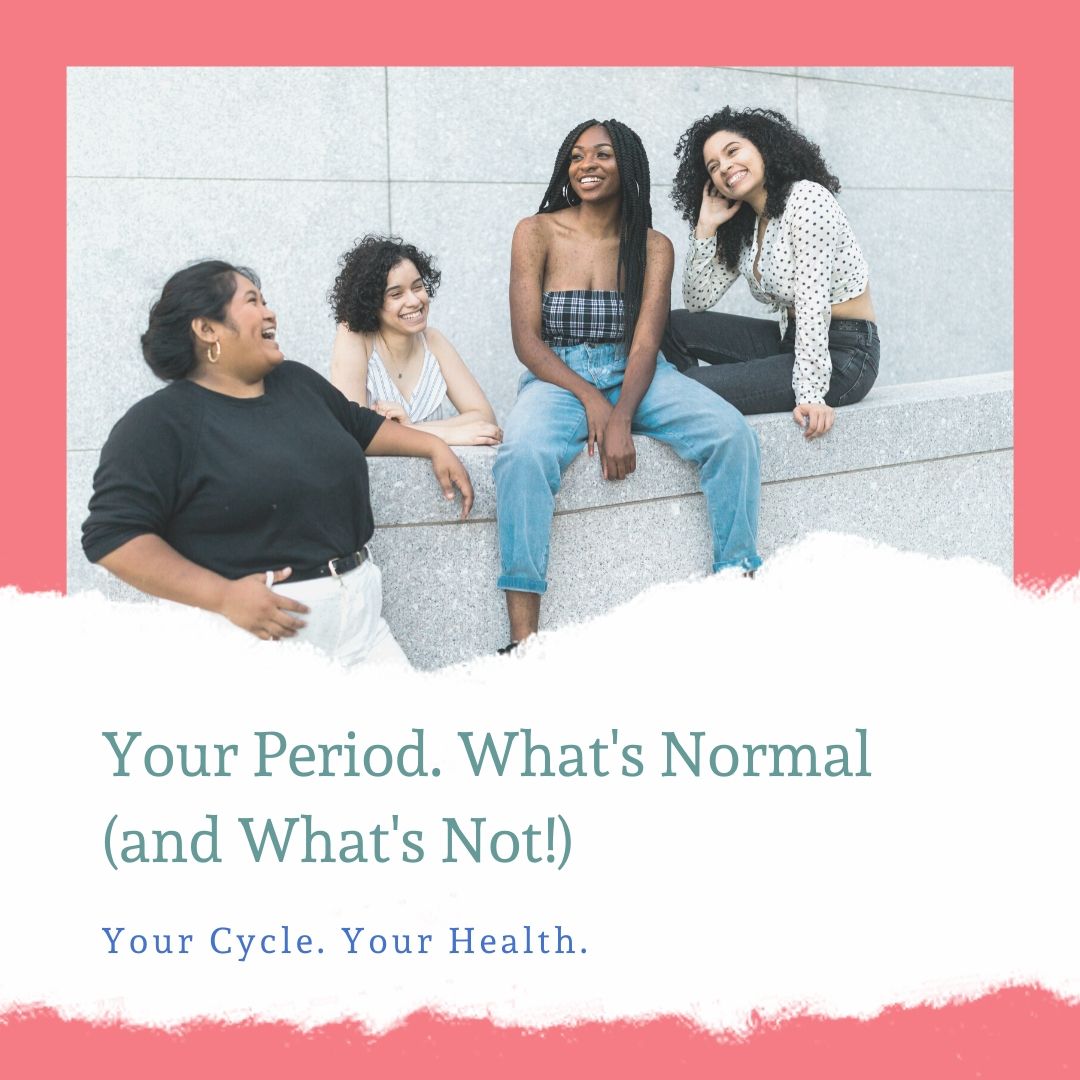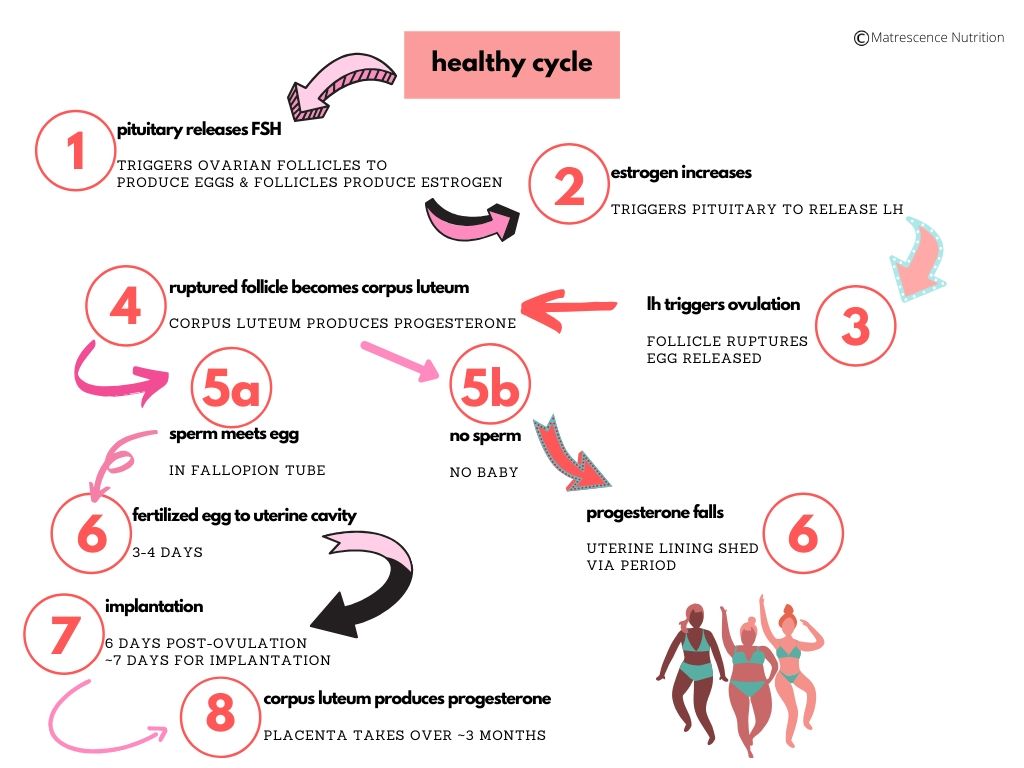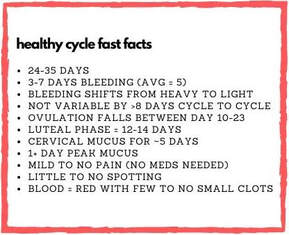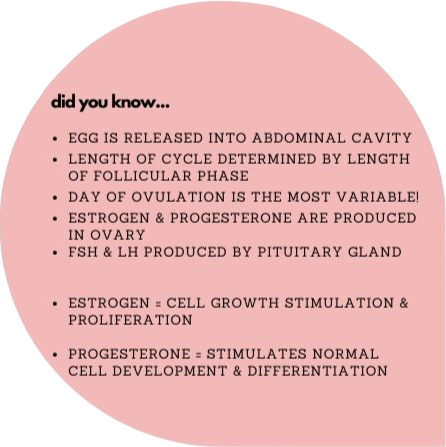Aunt Flo. Time of the month. Code Red. Girl Flu. Your Period. We call it a a lot of different things, often in an effort to be "polite" and not offend. Unfortunately, this desire to ignore or pretend this monthly (hopefully!) bleeding isn't happening also means many women have no idea what a period is supposed to look like. Pair that with a whole generation that's been on birth control from the moment they started donning a training bra, and you've got a recipe for disaster when it comes to healthy cycles and understanding what a menstrual cycle should be. In this four part series, we're going to look at what a healthy menstrual cycle looks like, what's going on throughout the month (beyond the often annoying bleeding), how to know if yours is healthy, and what you can do about it if it's not.
First and foremost, I encourage you to get to know your body. Call your parts by what they are, not your "lady bits", "privates", "hoo-ha", or any of that nonsense. The first step in truly understanding and mastering something is having and using the right language to talk about it. Not only are we doing ourselves and our children a major disservice by being nervous to use the correct anatomical names, but we're also making it easier for our own bodies, our own health, to remain a mystery. There are a myriad of reasons this isn't good, a conversation, perhaps, for another day, but in order to take control of your health, you've got to be willing to own it and not be embarrassed by it. The menstrual cycle is an AMAZING thing our bodies, as women, get to experience. Every month, our body, when in balance, prepares us to grow an actual little miracle. Even if you're not ready or considering getting pregnant, the very fact that your body is able to go through this cycle properly tells us a LOT about your overall health. If your cycle is off, your health is off, period (no pun intended!). So, let's start by looking at what the menstrual cycle is and how a healthy one should look.
The Menstrual Cycle
The menstrual cycle has two phases: Follicular Phase and Luteal Phase. The beginning of the Follicular phase - and your period - is Day 1 of your cycle. This is the first day you have an actual bleed, not just spotting. For most women, your period will last 3-7 days, with bleeding that typically starts heavy for the first day or two and then tapers off. This bleeding is actually your body "restarting" for a fresh egg. the thickening of the uterus wall that happened the previous month in preparation for a potential fertilized egg gets shed, being removed so a new lining can be generated via this monthly bleed. After the bleeding stops, a new lining begins to proliferate as the body prepares for another ovulation and potential pregnancy. This first half of the cycle is dominated by rising estrogen levels, thanks to your ovarian follicles, which is where your eggs are produced. As estrogen rises, the pituitary gland is triggered to release Luteinizing Hormone (LH). Once LH has increased to the necessary threshold, ovulation is triggered.
The second phase of your cycle, the Luteal Phase, begins at ovulation. The LH surge from rising estrogen levels in the first half of your cycle triggers the rupture of the ovarian follicle, releasing the waiting egg into the abdominal cavity to await potential fertilization. The ruptured follicle will become the Corpus Luteum, which produces progesterone. Progesterone is the dominant hormone of the second phase of your cycle. Estrogen levels rise, peaking just before ovulation, then after ovulation, progesterone levels rise until your period (or continue to rise, if you become pregnant!). Ovulation can take place any time between day 10 and 23 in a healthy cycle, with the luteal phase (time from ovulation to next period) being 12-14 days. Once the egg is released (within 24-72 hours of the LH surge), the egg remains viable for 12-24 hours.
If the egg is fertilized, the fertilized egg travels through the fallopian tube, to the uterine cavity. This journey takes 3-4 days, then implantation begins (about 6 days post-ovulation), and takes around 7 days to complete, bringing the total time from ovulation to around 13 days. The corpus luteum continues to produce progesterone until the placenta takes over at around 3 months of the pregnancy.
The menstrual cycle has two phases: Follicular Phase and Luteal Phase. The beginning of the Follicular phase - and your period - is Day 1 of your cycle. This is the first day you have an actual bleed, not just spotting. For most women, your period will last 3-7 days, with bleeding that typically starts heavy for the first day or two and then tapers off. This bleeding is actually your body "restarting" for a fresh egg. the thickening of the uterus wall that happened the previous month in preparation for a potential fertilized egg gets shed, being removed so a new lining can be generated via this monthly bleed. After the bleeding stops, a new lining begins to proliferate as the body prepares for another ovulation and potential pregnancy. This first half of the cycle is dominated by rising estrogen levels, thanks to your ovarian follicles, which is where your eggs are produced. As estrogen rises, the pituitary gland is triggered to release Luteinizing Hormone (LH). Once LH has increased to the necessary threshold, ovulation is triggered.
The second phase of your cycle, the Luteal Phase, begins at ovulation. The LH surge from rising estrogen levels in the first half of your cycle triggers the rupture of the ovarian follicle, releasing the waiting egg into the abdominal cavity to await potential fertilization. The ruptured follicle will become the Corpus Luteum, which produces progesterone. Progesterone is the dominant hormone of the second phase of your cycle. Estrogen levels rise, peaking just before ovulation, then after ovulation, progesterone levels rise until your period (or continue to rise, if you become pregnant!). Ovulation can take place any time between day 10 and 23 in a healthy cycle, with the luteal phase (time from ovulation to next period) being 12-14 days. Once the egg is released (within 24-72 hours of the LH surge), the egg remains viable for 12-24 hours.
If the egg is fertilized, the fertilized egg travels through the fallopian tube, to the uterine cavity. This journey takes 3-4 days, then implantation begins (about 6 days post-ovulation), and takes around 7 days to complete, bringing the total time from ovulation to around 13 days. The corpus luteum continues to produce progesterone until the placenta takes over at around 3 months of the pregnancy.
some of the more technical aspects could be new news. But, overall, as a woman, not understanding this "thing" that happens to you every month for an average of 40 - yep, FORTY - years of your life...well, that seems like a lot to not know about yourself! You'll likely spend more of your adult live with a period than without! So, from just a pure "this is your life" standpoint, understanding your cycle is kind of a no-brainer. And if you're hoping to get pregnant? Well, being intimately acquainted with your cycle and how it impacts your fertility is essential! You can't make changes, advocate for yourself, understand where issues might lie if you don't know what normal looks like. My goal is always to empower my clients so that they feel in charge of their health, not at the mercy of medical professionals who don't know YOU. This doesn't mean don't listen to medical professions (I am one, and I really hope you're listening to me!); but I do want you to feel like you know what questions to ask, when to seek a second opinion, or when to ask for help.
*Note that the "period" you get while on birth control isn't really a period. The bleeding is secondary to the shift in synthetic hormone levels provided by your birth control. This is also why some birth controls allow for no actual bleed for several months or more, or a "skipped" bleed here or there if you toss the pills at the end of the month and start a new pack right away. This bleeding is actually called a "withdrawal" bleed.



